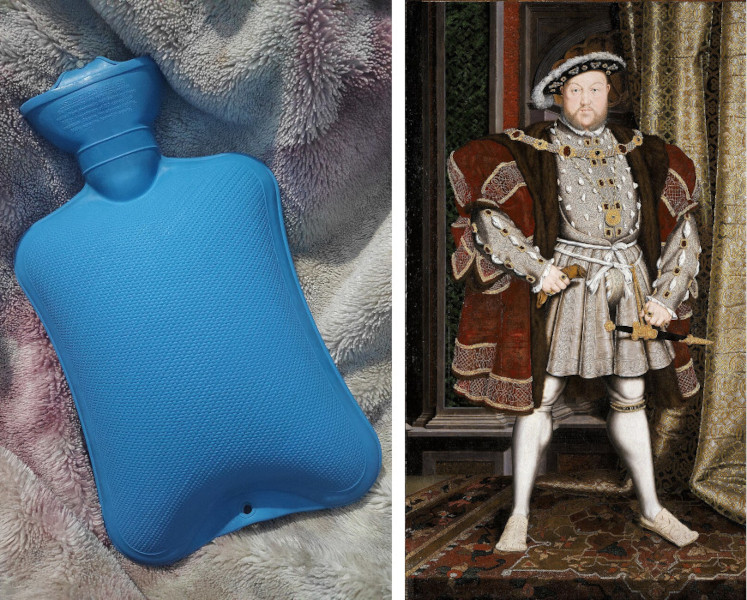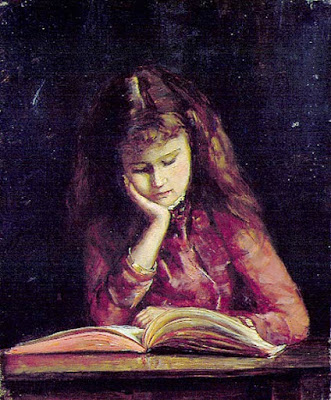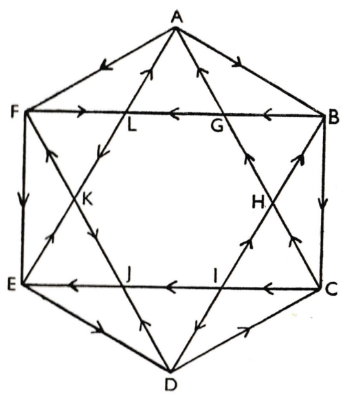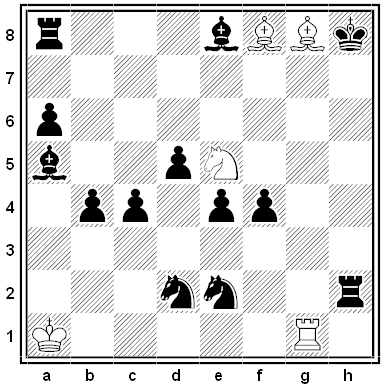
“Have you ever noticed … that all hot-water bottles look like Henry the Eighth?” — Max Beerbohm

“Have you ever noticed … that all hot-water bottles look like Henry the Eighth?” — Max Beerbohm
Edmund Conti notes an unfortunate mannerism in Ngaio Marsh’s 1970 detective novel When in Rome:
Page 14: “Here,” he said in basic Italian. “Keep the change.” The waiter ejaculated with evident pleasure.
Page 49: “Nothing to what I was!” Sophy ejaculated.
Page 74: They could be heard ejaculating in some distant region.
Page 75: “Ah,” ejaculated Grant, “don’t remind me of that for God’s sake!”
Page 84: “Violetta, is it!” he ejaculated.
Page 87: “Good God!” the Major ejaculated.
Page 88: “Well!” the Major ejaculated.
Page 88: There were more ejaculations and much talk of coincidence …
Page 104: Marco gave an ejaculation and a very slight wince.
Page 109: “Phew!” said the Major, who seemed to be stuck with this ejaculation.
Page 140: “Eccellenza!” the Questore ejaculated.
Page 145: The Van der Veghels broke into scandalized ejaculations, first in their language and then in English.
Page 149: Sophy had given a little ejaculation.
Page 149: “I remember!” the Baron ejaculated.
Page 157: Finally Giovanni gave a sharp ejaculation.
Page 188: “We would exclaim, gaze at each at each other, gabble, ejaculate, tell each other how we felt …”
Page 194: Bergami ejaculated and answered so rapidly that Alleyn could only just make out what he said.
Conti adds, “Cigarette?”

Read proudly; put the duty of being read invariably on the author. If he is not read, whose fault is it? I am quite ready to be charmed, — but I shall not make believe I am charmed.
— Emerson, address at the opening of the Concord Free Public Library, Oct. 1, 1873
A problem from the October 1961 issue of Eureka, the journal of the Cambridge University Mathematical Society:
“The map below represents one-way street system of a certain university city, the direction in which travel is allowed being indicated by arrows. An undergraduate living at A wishes to cycle round the city, visiting each intersection just once, and returning to A. What route must he take?”


For his 1992 palindrome dictionary From A to ZOtamorf, Stephen J. Chism set out to gather all the reversible expressions in English that had been published up to that point. He divides them sensibly into single words; phrases and sentences; poems; and personal and place names — but the last chapter is titled FOR SOME REASON CHEESE:
A duo Gouda
Ate Feta?
Cheese not dairy. Myriad tone? See H.C.
Cheese? See H.C. …
Disk Colby block, Sid.
Edam Hannah made
He ate feta, eh?
He made lives evil. Edam, eh?
Lay block Colby, Al.
No Brie, Irbon?
No Romano on a moron …
Not Lit, Stilton?
Note Siwss: “I.W. Seton”
Why block Colby, H.W.?
“I don’t propose to explain it,” he writes. “Cheese is as unlikely as it is likely; a seemingly ordinary food product. Why, then, do we find it treated more thoroughly in palindromes than any other substance?”
In The King’s English (1997), Kingsley Amis cites an old joke that illustrates the confusing distinction between shall and will:
A swimmer in difficulties was heard to shout, ‘I will drown and nobody shall save me.’ At an inquest on the unfortunate fellow, English jurors wanted a verdict of suicide, Scottish jurors a verdict of death by misadventure, and MacTavish pressed for a rider or footnote rebuking witnesses for making no effort to rescue the victim.
Under the old rule, I shall indicated a prediction and I will denoted a promise or threat. Confusingly, in the second and third persons these meanings were reversed, so that you/she will indicated simple futurity and you/she shall denoted an intention or command. Still more confusingly, old-fashioned speakers of Scottish English reversed this whole understanding of the matter. So while the English jurors thought the swimmer was saying, “It is my intention to drown, and it is my express desire that nobody try to save me,” the Scots took him to say, “I am going to drown and it seems that nobody is going to save me.”
All this has only grown more confused with the popularity of contractions such as I’ll and you’ll, and Americans have generally dispensed with shall and use will for everything. Of the joke, Amis writes, “Nobody tells that one today.”
A Mr. Harwood had two daughters by his first wife, the eldest of whom was married to John Coshick; this Coshick had a daughter by his first wife, whom old Harwood married, and by her he had a son; therefore, John Coshick’s second wife could say as follows:–
My father is my son, and I’m my mother’s mother;
My sister is my daughter, and I’m grandmother to my brother.
— Charles Carroll Bombaugh, Gleanings From the Harvest-Fields of Literature, 1869

By Daniel Currie Hall. Suppose time stops and the white knight can make as many consecutive moves as it pleases. How quickly can it mate the black king provided that it never moves onto a square on which it’s under attack? (It can make captures, provided it makes them “safely.”)
In his adopted home of Majorca, Robert Graves once encountered a memorable tourist leaflet:
They are hollowed out in the see coast at the municipal terminal of Capdepera, at nine kilometer from the town of Arta in the Island of Mallorca, with a suporizing infinity of graceful colums of 21 meter and by downward, wich prives the spectator of all animacion and plunges in dumbness The way going is very picturesque, serpentine between style mountains, til the arrival at the esplanade of the vallee called ‘The Spider’ There are good enlacements of the railroad with autobuses of excursion, many days of the week, today actually Wednesday and Satturday Since many centuries renown foreing visitors have explored them and wrote their eulogy about, included Nort-American geoglogues
He commemorated it with a poem:
Such subtile filigranity and nobless of construccion
Here fraternise in harmony, that respiracion stops
While all admit their impotence (though autors most formidable)
To sing in words the excellence of Nature’s underprops,
Yet stalactite and stalagmite together with dumb language
Make hymnes to God wich celebrate the strength of water drops
King William’s College, on the Isle of Man, has posted this year’s edition of “The World’s Most Difficult Quiz,” with its customary epigraph, Scire ubi aliquid invenire possis ea demum maxima pars eruditionis est (“The greatest part of knowledge is knowing where to find something”). Some sample questions:
Answers will be posted at the end of January.
Usually MetaFilter organizes a Google spreadsheet of communal guesses; if that materializes I’ll post a link here.